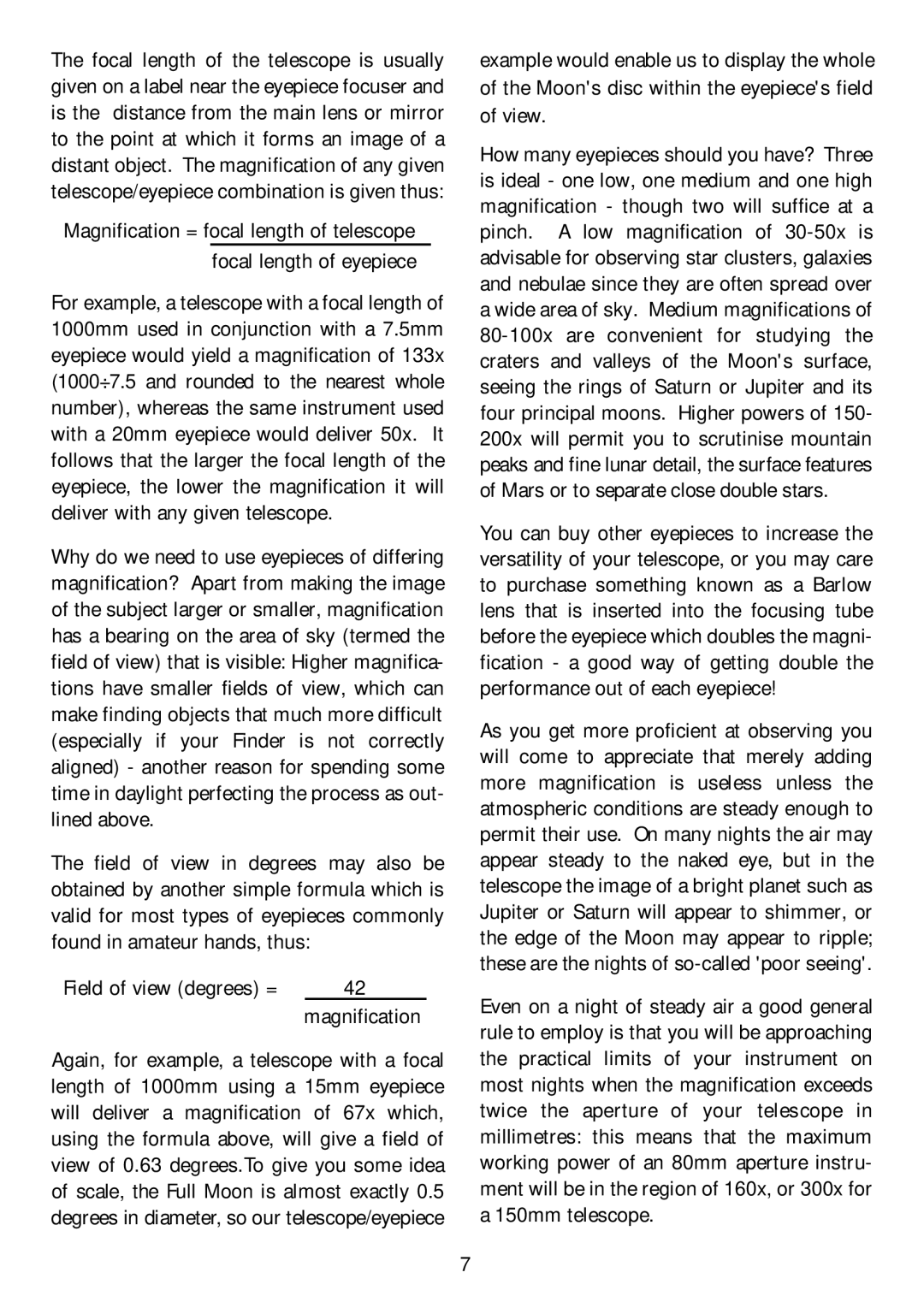The focal length of the telescope is usually given on a label near the eyepiece focuser and is the distance from the main lens or mirror to the point at which it forms an image of a distant object. The magnification of any given telescope/eyepiece combination is given thus:
Magnification = focal length of telescope
focal length of eyepiece
For example, a telescope with a focal length of 1000mm used in conjunction with a 7.5mm eyepiece would yield a magnification of 133x (1000÷7.5 and rounded to the nearest whole number), whereas the same instrument used with a 20mm eyepiece would deliver 50x. It follows that the larger the focal length of the eyepiece, the lower the magnification it will deliver with any given telescope.
Why do we need to use eyepieces of differing magnification? Apart from making the image of the subject larger or smaller, magnification has a bearing on the area of sky (termed the field of view) that is visible: Higher magnifica- tions have smaller fields of view, which can make finding objects that much more difficult (especially if your Finder is not correctly aligned) - another reason for spending some time in daylight perfecting the process as out- lined above.
The field of view in degrees may also be obtained by another simple formula which is valid for most types of eyepieces commonly found in amateur hands, thus:
Field of view (degrees) = | 42 |
| magnification |
Again, for example, a telescope with a focal length of 1000mm using a 15mm eyepiece will deliver a magnification of 67x which, using the formula above, will give a field of view of 0.63 degrees.To give you some idea of scale, the Full Moon is almost exactly 0.5 degrees in diameter, so our telescope/eyepiece
example would enable us to display the whole of the Moon's disc within the eyepiece's field of view.
How many eyepieces should you have? Three is ideal - one low, one medium and one high magnification - though two will suffice at a pinch. A low magnification of
You can buy other eyepieces to increase the versatility of your telescope, or you may care to purchase something known as a Barlow lens that is inserted into the focusing tube before the eyepiece which doubles the magni- fication - a good way of getting double the performance out of each eyepiece!
As you get more proficient at observing you will come to appreciate that merely adding more magnification is useless unless the atmospheric conditions are steady enough to permit their use. On many nights the air may appear steady to the naked eye, but in the telescope the image of a bright planet such as Jupiter or Saturn will appear to shimmer, or the edge of the Moon may appear to ripple; these are the nights of
Even on a night of steady air a good general rule to employ is that you will be approaching the practical limits of your instrument on most nights when the magnification exceeds twice the aperture of your telescope in millimetres: this means that the maximum working power of an 80mm aperture instru- ment will be in the region of 160x, or 300x for a 150mm telescope.
7
